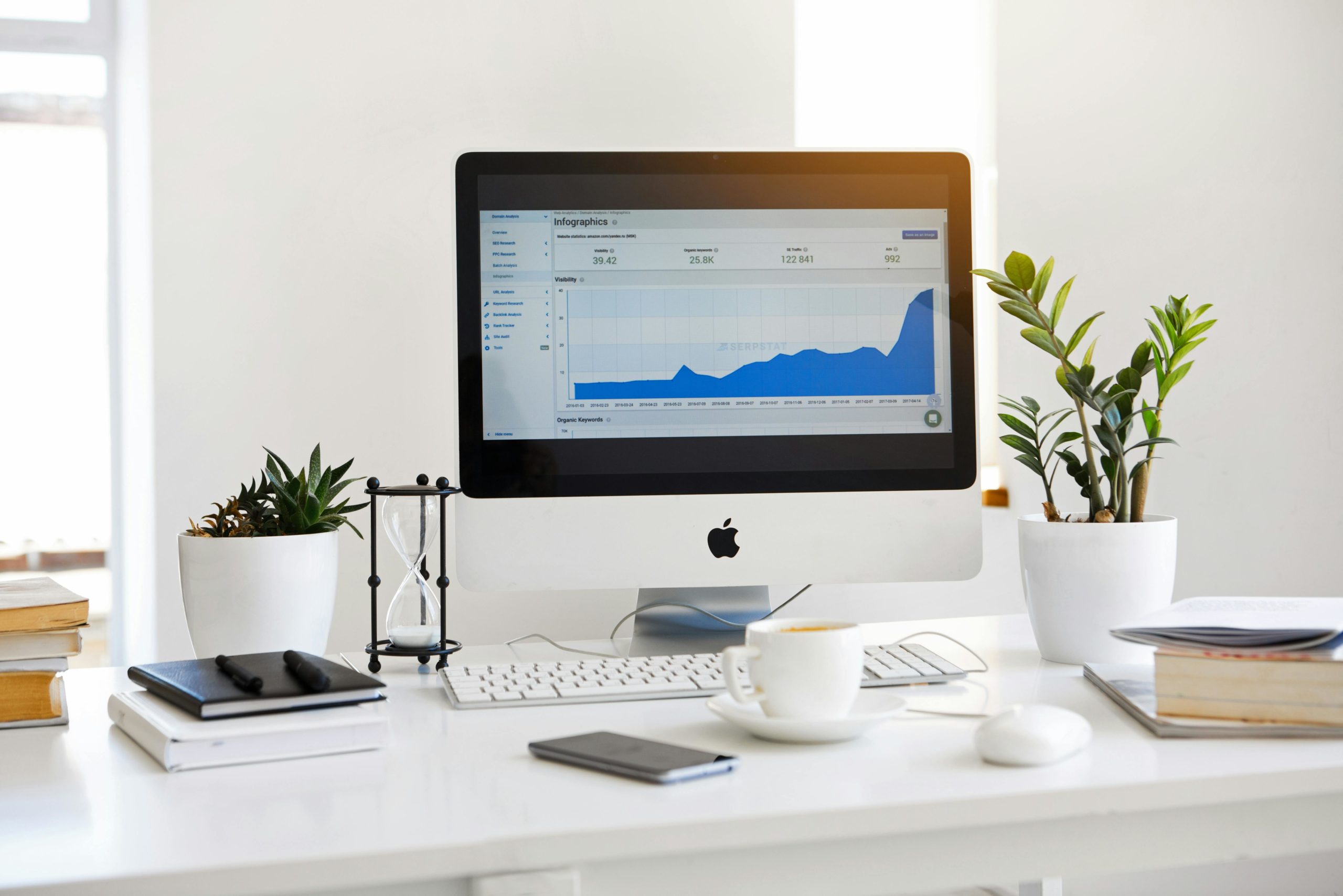Commercial Asset Finance: What You Need to Know About Leases, Hire Purchases, and Loans
The business landscape has always been competitive- and always will be. For any company looking to grow and scale, significant investment is required, not just upfront but at regular intervals to stay ahead with the latest technology that enhances operational efficiency and business profitability.
While you may already be familiar with strategies like commercial asset finance to support business growth, you might still be unsure about how it works and how it could benefit you. Likewise, you may not have received the guidance needed to explore this financial tool effectively.
To help, here’s a breakdown of some key terms commonly used in the world of commercial asset finance.
Commercial Asset Finance Explained
In essence, commercial asset finance helps keep your business operations running smoothly and growing by allowing you to acquire essential assets while managing your cash flow effectively.
The process typically begins with identifying the equipment your business needs– that’s the easy part. The challenge comes when you realise you may not have the funds to finance all of it upfront. In some cases, depending on the type of asset, purchasing outright might not even be the most practical option.
This is where commercial asset finance comes in. It enables you to acquire necessary assets such as machinery, equipment, vehicles, office technology, medical systems, and energy solutions without having to pay the full cost upfront.
Instead, payments are spread over time, helping you maintain healthy cash flow. In some cases, you may even have the option to rent equipment, allowing you to upgrade to the latest technology as it becomes available.
3 Types of Commercial Asset Finance
There are various types of asset finance, but three of the most common are leases, hire purchases, and loans.
Leases
A lease is an agreement that allows a business to use an asset for a fixed period, typically with payments made monthly, quarterly, or annually. In some cases, at the end of the lease term, the business may have the option to purchase the asset at its current market value, which is often lower than the initial cost. In Australia, there are three main types of leases:
A finance lease is used for high-value purchases. This type of lease transfers the risks and rewards of ownership to the business. The business is responsible for maintaining the asset and managing any associated risks.
An operating lease is a mid-term lease ideal for assets that may become outdated over time. Unlike a finance lease, the lender retains ownership and assumes the risks associated with the asset.
A novated lease is specific to vehicle leasing. This arrangement allows businesses to enable employees to finance a vehicle and its running costs through salary sacrifice. The vehicle is primarily for personal use by the employee.
Hire Purchases
Just as the name suggests, a hire purchase agreement involves a buyer making continuous installment-like payments until the total purchase price, including interest is paid off.
Within a hire purchase agreement, you have the option to pay for the full purchase price of the item at any point during the agreement period. If you can’t keep up with the agreed payment terms, the item may be repossessed by the seller.
Loans
Sometimes referred to as a ‘chattel mortgage’, an equipment loan may be suited towards businesses that want to own the equipment outright. Typically, a chattel mortgage follows a similar structure as a traditional home loan or a mortgage.
In contrast to a hire purchase agreement or a lease, a loan gives you the ownership of the item straightway. All you need to do is pay off the loan through an agreed upon payment plan.
Choosing the Right Option
Before you select and agree to any form of commercial asset financing agreement, it’s important to understand your options and the agreements you might be signing on to. It’s always best to seek the advice of an expert, whether a financial advisor or even an insurance agent.
By partnering with an insurance agent, it’ll simplify the process of acquiring the right commercial asset finance. Most insurance agents are well-versed in guiding businesses towards determining the most appropriate type of asset finance that best suits their needs while providing them with resources to obtain the best insurance coverage to protect their high-value assets.
Let Morgan Insurance Brokers Help
If you’re keen on leveraging the power of commercial asset finance to grow your business, reach out to our team of experienced insurance brokers. We’ll guide you through the nitty gritty details of commercial asset finance to help you meet your current and future business goals.
How Commercial Asset Finance Can Help Your Business Stay Competitive
Need new assets to expand your business but don’t want to incur major upfront costs? Commercial asset finance could be the best solution for your business. As a business owner, you’ve likely faced the challenge of wanting to expand your business–whether that means hiring more employees, moving offices, diversifying your product/service offerings, or most importantly, accessing the latest technology. However, finding the funds to do so can be challenging.
Rather than taking out a traditional loan to finance new equipment outright, commercial asset finance can be a more economical, flexible alternative. This article will explore how commercial asset finance can help your business remain competitive.
Commercial Asset Finance – Explained
In essence, commercial asset finance is designed to help businesses obtain pricey assets: computers, printers, office equipment, vehicles, and more, without having to pay for the full cost of it upfront. Instead, the costs are spread across equal loan payments over a fixed period of time. This enables businesses to keep costs at a minimum, allowing them to invest in other, more pressing growth opportunities.
There are three main types of commercial asset finance:
- Leases are the most common type of asset financing utilised by businesses. It allows businesses to use an asset for a fixed period of time with payments made regularly. At the end of the lease agreement, the business may have the option to purchase the asset at its current value.
- A hire purchase is similar to a lease but it comes with the intention of owning the asset at the end of the payment term.
- A chattel mortgage is when the business is keen on owning the equipment from the get-go. The borrower takes ownership of the asset from the very beginning, but uses it as collateral for a loan.
Benefits of Commercial Asset Finance
Curious about how asset financing can help your business grow? Benefits include:
Capital Preservation
Without significantly depleting your working capital, you’ll be able to acquire the necessary tools needed for growth. By strategically spreading payments over time, asset financing helps businesses maintain a healthy cash flow which is crucial for immediate investments. In the long run, this helps maintain a sustainable business model.
Tax Benefits
According to Commonwealth Bank Australia, an instant asset write-off deduction may be available– if certain eligibility requirements are met. For example, for chattel mortgages and hire purchases, deductions may be available for costs associated with depreciation, interest rates, and operating expenses. Likewise, businesses may also be able to claim GST input tax credits upfront.
Moreover, in terms of leases– loan payments may be tax-deductible. Some businesses may even be entitled to claim GST input ax credits in their Business Activity Statement.
For more information on this, it’s important to enlist the help of a taxation expert or an insurance broker. An experienced broker can help with providing all the necessary policy documentation and payment breakdowns so your tax advisor can claim deductions accordingly.
Improved Flexibility
There are a range of commercial asset financing options available for businesses to choose from. Each option is designed to cater to the distinct needs of a business. This allows them to choose the option that best suits their immediate and future needs based on their financial goals, operational efficiency, and ideal growth trajectory.
Need help determining the right type of commercial asset financing for your business? An insurance broker can help tailor financial solutions to meet the specific needs of each business through partnerships with a range of providers, securing better rates and terms.
More Risk Averse
Businesses are able to assess and mitigate any potential losses associated with the acquiring and ownership of assets. This is because business success isn’t always guaranteed.
So, if there’s ever the likelihood of defaulting on the asset finance agreement, the business will only lose asset ownership and not necessarily be liable to any other major risks. While unfortunate, it’s a preferred option.
Access to Latest Technology
To always be one step ahead of the curve, businesses need access to the latest technology. Commercial asset based financing enables businesses to gain access to the best equipment available in the market without needing to worry about budget limitations.
Morgan Insurance Brokers – Your Commercial Asset Financing Partners
If you’re considering commercial asset financing to grow your business, do not hesitate to contact Morgan Insurance Brokers for access to the best asset financing options. With our industry connections, our team of experts will help you secure a better rate and term.
Contact us today!
Is Commercial Asset Finance Right for Your Business? Key Considerations
A key question many businesses ask themselves when acquiring new assets is whether to purchase them outright or through a hire purchase agreement. Commercial asset-based finance can be a reliable solution for businesses facing cash flow issues.
It utilises a business’s assets as collateral for a loan, with the amount financed potentially reaching up to 100% of the asset’s market value. Such financing can be secured by real estate or other assets such as machinery, equipment, and vehicles.
There are two common types of commercial asset-based financing:
First, invoice financing allows businesses to access working capital tied up in unpaid invoices by utilizing the accounts receivable ledger as collateral. This enables cash flow to be brought forward, allowing the business to receive the invoice amount when it is issued rather than waiting for payment from the customer.
Second, equipment finance is for businesses that need to purchase equipment, such as machinery or technological infrastructure. This type of financing is self-securing, which means that the equipment purchased acts as collateral for the loan. If the borrower defaults, the lender has the right to repossess the equipment. Common types of equipment financing include hire purchase, an operating lease, and finance lease.
In essence, both types of asset-based financing utilise a business’s available assets but work in different ways. More often than not, they’re utilised complementarily, as businesses tailor their financing to multiple needs.
What type of businesses benefit most from commercial asset-based finance?
Commercial asset-based financing can benefit a variety of businesses, depending on specific needs. Most prominently, businesses that may benefit most include:
- Asset-heavy businesses. These are businesses that rely on fixed assets like vehicles, machinery, and other equipment to generate sales. Typically, these entail businesses in construction, manufacturing, and healthcare, which require expensive equipment to operate. This allows them to acquire the necessary tools and equipment without large upfront investments.
- Service-based businesses. These are businesses that are less reliant on fixed assets. Invoice financing allows these businesses to access the working capital tied up in their unpaid invoices. Hence, it’s best for businesses with strong customers and a high volume of outstanding invoices that need quick access to cash.
- Alternatively, many businesses, especially those that operate in multiple sectors or have both physical assets and accounts receivable can benefit from using both types of asset-based finance to support different parts of their operations.
Equipment financing helps with acquiring or upgrading equipment, while invoice financing boosts cash flow by accessing funds tied up in unpaid invoices. This combination provides flexibility in managing different financial needs across various areas of the business.
Is commercial asset finance right for my business?
Key considerations to help you decide if commercial asset-based finance is right for your business:
- If your business is experiencing cash flow issues or you require access to working capital immediately, commercial asset-based finance can be a reliable solution.
- If your business currently owns assets that can be used as collateral, then commercial asset-based finance can be an option.
- If your business is keen on growth, then commercial asset-based finance is a scalable solution to fund your growth sustainably.
- If your business is struggling to meet the eligibility requirements set out by banks and various financial institutions, commercial asset-based finance is a good alternative. The application process is less strenuous and time-consuming.
- If cost is a factor, then commercial asset-based loans are a cheaper alternative compared to conventional business loans.
The best way to go forth is to then determine the specific type of asset based finance required. Then, find the right lender with the financing arrangement that best suits your operational needs.
How can a finance broker help?
Navigating the complexities involved in accessing commercial asset-based financing can be challenging without the right assistance. Consider enlisting the help of finance brokers to help source the most appropriate asset financing options.
Finance brokers have immense knowledge surrounding various financial products and services, and guide you towards partnering with a provider that meets the unique needs of your business. More often than not, brokers are able to help you secure a better rate and term than you would be able to source on your own, largely due their industry connections.
If you’re a business looking to leverage the power of commercial asset finance to sustainably grow your business, consider reaching out to our team of experienced brokers at Morgan Insurance Brokers. We’ll strive to help you meet your business goals through strategic commercial asset financing.
How to Use Asset Finance to Boost Your Business Growth ?
When starting a business, one might find that there are limited options for funding or borrowing money, largely due to a limited credit history. However, after the initial years of operation, your business may have reached a stage where it’s ready to propel its growth.
One beneficial way to do this is by using asset-based financing as part of a larger business strategy. Instead of investing a large sum of money upfront to acquire necessary equipment and machinery, businesses can spread the cost over time with small, regular payments. This, in turn, enables businesses to preserve working capital while allocating funds to other core areas of growth. Similarly, with existing assets, one can opt to refinance them, further elevating their existing value.
This can be especially beneficial for startups by allowing them to gain access to vital equipment with manageable monthly payments. Essentially, by strategically employing asset finance, businesses can not only improve their cash flow but also promote long-term growth. Whether new or established, asset finance is a valuable tool for businesses to consider.
What is Asset Finance?
Asset finance is a relatively straightforward funding alternative that allows businesses to acquire essential assets without a large, upfront investment. At the same time, it allows businesses to start utilizing those assets while still paying for them. Businesses also have the option to refinance existing assets.
A variety of assets can be obtained through asset finance, including vehicles, machinery, technological infrastructure, furniture, and hardware. These assets tend to be tangible items that assist and improve a business’s performance.
Essentially, asset finance provides access to high-quality equipment that may not be affordable to purchase outright. This then allows businesses to expand their operations without putting a strain on their working capital. They will have the opportunity to raise finance simply through their existing assets.
Types of Asset Finance
There are a range of asset finance options, each with different terms and benefits.
- A hire purchase enables businesses to own the asset at the end of their term. However, till then the finance provider retains ownership of the asset.
- A finance lease enables a finance provider to purchase the asset and then lease it to the business. The business makes monthly payments, and at the end of the lease can either choose to extend the lease, return the asset, or sell it on behalf of the provider.
- An operating lease is suitable for businesses that require an asset only for a specific period of time. The provider retains ownership of the asset but the business has the option to upgrade to newer models throughout the leasing period.
- A contract hire is specifically designed for vehicle-related leasing. The provider manages the sourcing and maintenance of the vehicles, while businesses make regular payments for usage of the vehicle over the specified lease term.
- A sale and leaseback involves businesses selling an existing asset to a finance provider, and leasing it back. This enables the business to free up capital whilst retaining usage of the asset.
How to Make the Most of Asset Finance?
- First, start by acquiring the essential assets you require, whether it’s vehicles, machinery, office furniture, and more.
- Next, strive to improve your cash flow by spreading the cost of your assets over time. This is especially important to maintain liquidity and ensure that your business can meet its current operational expenses.
- Third, consider asset refinancing. This enables you to unlock the value locked inside your existing assets. Gain the ability to release a lump sum of cash without interrupting your right to use your assets.
- Fourth, make sure your asset finance agreement enables you to access the latest equipment available in the market.
- Fifth, determine the tax benefits you may gain from asset financing. Some forms of asset finance can be fully deducted as a business expense, hence reducing your taxable income.
- Sixth, make sure to plan and budget confidently. The fixed repayment schedule often associated with asset finance makes budgeting easier and more efficient.
- Last but not least, use a broker. Experienced brokers can simplify the whole asset financing process for you. They’ll help you gain access to better deals and ensure you receive expert guidance throughout your partnership. Brokers typically have relationships with multiple lenders, hence the ability to sift through multiple options to find a financial provider that best suits your needs.
Need an experienced broker to help you leverage the power of asset finance? Contact Morgan Insurance Brokers today!
The Importance of Insurance When Financing Business Assets
At present, businesses nationwide face various risks to their assets that can be mitigated with the right insurance policy. These risks can stem from losses associated with natural disasters, theft, cyber-attacks, machinery breakdowns, and more.
Having a reliable asset insurance policy can provide businesses with a vital tool to protect both their tangible and intangible possessions. Without appropriate insurance, businesses would have to bear the entire cost of replacing or repairing their assets in the event of the unexpected.
Likewise, asset insurance is a requirement for many lenders before they will provide a loan. This is to protect the loan if the borrower defaults. Therefore, it not only safeguards the business's well-being but also improves their credibility.
Types of Asset Insurance
The following are some of the most common insurance options for businesses:
- Property insurance, which covers damage or loss to buildings and other physical assets due to events like natural disasters, fire, and theft.
- Building and contents insurance is a similar type of insurance to property insurance that covers damage or loss from events including fire, storms or break-ins.
- Equipment insurance, which covers damage or loss to equipment used for business operations.
- Commercial vehicle insurance, which covers damage or loss to vehicles used for business purposes.
- Business interruption insurance, which covers lost revenue and operating expenses due to a disruption in operations caused by an unexpected event.
- Cyber liability insurance, which covers losses or damages caused by cyber-attacks and other cyber threats.
- Key person insurance, which covers loss of revenue or profits due to the death, illness, or disability of a key employee.
- Deterioration of stock insurance, which covers lost stock in cold storage after a fridge or freezer breaks down.
- Goods in transit insurance, which covers loss or damage to items during transport.
- Electronic equipment insurance, which covers electronic items from breakdown, loss or damage while at a specific location.
- Portable equipment insurance, which covers loss, damage or theft of tools and electrical equipment taken on a job.
- Burglary insurance, which covers losses, damages and associated costs from a break-in or theft.
- Farm insurance covers crops, livestock, buildings and machinery.
The selection of appropriate asset insurance for your business is crucial and necessitates careful evaluation of your specific requirements and potential risks. Although you might not need every type of insurance listed above, it's likely that you'll need a combination of several.
Steps to Choosing the Right Asset Insurance
As a business, choosing the right type of asset insurance is a critical decision. Here are some steps that will guide you towards selecting the best asset insurance policy for your business needs.
- Start by conducting a risk assessment to identify potential hazards that may affect your assets. This could include environmental risks such as fires or natural disasters and even safety risks such as thefts and cyber attacks.
- Next, determine the value of your assets. This includes physical assets as well as intangible assets, to ensure you choose an insurance plan with adequate coverage.
- Then, you should undertake comprehensive research into the range of providers and plans to find one that will meet your exact needs. It’s important to consider their experience, reputations, and financial stability so that you can be assured of their reliability on offering the right type of coverage for your business assets.
- Make sure to carefully review the terms and conditions of your policy before signing on to it. This is to ensure that it meets your specific needs, including clearly outlining exclusions, deductibles, and coverage limitations.
- Last but not least, it is advisable to seek the professional advice of insurance brokers to help in navigating the complexities involved. Brokers can provide guidance on the types of coverage that may be appropriate for your specific situation and industry.
Let Morgan Insurance Brokers Help
If your business is looking to invest in insurance to protect its assets, contact Morgan Insurance Brokers today. Our team can source the ideal insurance policy for your needs. With access to over 150 insurers and underwriting policies, we simplify the process and help you determine the best coverage for your business.
Get ready to discover the peace of mind that comes with proper asset protection.
Top Benefits of Financing Your Business Assets vs. Buying Them Outright
While purchasing business assets outright may seem appealing, it's crucial to consider the financial implications for your business. The substantial upfront capital expenditure could negatively impact your business's performance and future growth. Furthermore, tying up a significant amount of capital in assets might lead to missed opportunities for more profitable investments in the near future.
Hence, this is where financing options like asset finance provide a more flexible and appealing approach towards preserving your working capital whilst still obtaining the required assets.
Nonetheless. It's important to carefully evaluate all your options in order to make an informed decision about how to best acquire the assets your business needs.
What is Asset Financing?
Asset financing is a flexible funding method that enables businesses to acquire new or used assets. It is a highly recognisable source of financing, and is often used for assets that generate revenue when used. Rather than spending a lump sum of money on an asset, financing it allows businesses to spread the cost of the asset over its lifespan.
There are several types of asset financing options available:
- Hire purchase involves the business paying a deposit initially, and then fixed monthly instalments. The asset then becomes the business’s property after the final payment is made. This is an attractive option for businesses who want to invest in heavy and/or expensive machinery.
- Finance leases enables businesses to utilise equipment for a fixed period of time whilst also being responsible for maintenance, repairs, and operational costs. This is an appealing option for significant assets like factory plants.
- Asset refinancing is a suitable option for businesses who already invested in equipment but are keen on unlocking its hidden value. Here, the lender would buy the equipment and then lease it back to the business over a specified period.
- Operating leases are contracts that permit the use of an asset without the need to transfer ownership. This means businesses can avoid the high costs associated with purchasing altogether.
Benefits of Asset Financing
If you’re considering asset financing as a viable option for your business, here are several core benefits that might help facilitate your decision.
- Asset financing enables your business to preserve cash flow. By avoiding large upfront costs, you can utilise your funds for other essential expenses and investments that can help generate profits.
- With asset finance, your business gains access to higher-quality assets that you may not have been able to afford. This in turn can help your business maintain a competitive edge, thus improving your revenue generation.
- Asset finance agreements come with flexible repayment plans. These plans can typically be tailored to meet the needs of your specific business, with options available for varying deposit sizes and seasonal payment plans that align with your business’s busiest and quietest periods.
- Asset financing payments are often tax deductible. This in turn lowers your business’s taxable income, thus providing further savings.
- By avoiding ownership responsibilities, you save business time and money on tasks like decommissioning, packaging, transportation, and re marketing.
- Gain access to the latest technology which may be too costly to purchase outright. As a business, regularly replace your older assets with new, updated ones that help you increase your productivity and profitability.
- Effectively manage capital and debt through asset financing. Since your capital is not tied up in equipment, you can use it to pursue new opportunities, expand your operations or make strategic acquisitions. Likewise, savings from asset financing can be used to pay off existing debt or secure other core facilities.
- Be able to benefit from inflation. With payments made in instalments with fixed rates, inflation works in your favour as the value of money depreciates. This is because you’ve purchased the usage of your assets at a discounted rate.
Disadvantages of Buying Assets Outright
Purchasing assets outright can present several drawbacks for businesses, especially small and medium-sized enterprises.
-
- Outright asset purchases require a large initial capital outlay which can strain your businesses ability to finance other essential purchases.
- Spending a large amount of money on an asset can reduce your cash flow, hindering your ability to operate optimally.
- If your business takes out a loan to fund an asset purchase, it may miss out on potential investment opportunities that could yield higher returns and accumulate additional liabilities such as higher interest rates.
- Costs associated with deprecation, maintenance, and upgrades can be substantial, straining overall business finances.
While outright ownership of assets seems appealing, it does come with a lieu of financial challenges. Choosing the most appropriate method to acquiring assets requires a careful evaluation of your business’s current financial situation and long-term goals.






